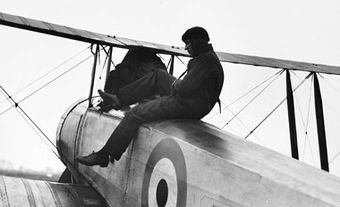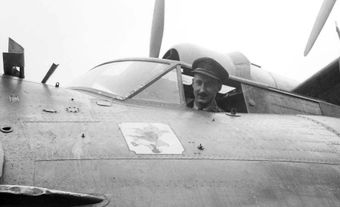George Cockburn
George Cockburn, Royal Navy officer, military figure in the WAR OF 1812 (b at London, England, 22 Apr 1772; d at Leamington Spa, Warwickshire, England, 19 Aug 1853). Cockburn attended the Royal Navigational School in London and joined the Royal Navy as a captain's servant at age 9, taking his first sea voyage in 1786. In January 1793, he was commissioned as a lieutenant and the following June was appointed to HMS Victory, the flagship of Lord Hood. During the ensuing years he served on various vessels in the Atlantic and the Caribbean.
During the NAPOLEONIC WARS, he played a significant role in the reduction of Martinique and commanded a flotilla of gunboats and bomb vessels in co-operation with the army in the Scheldt. In 1810 Cockburn went to Quiberon Bay aboard Indefatigable, and in March, he landed two agents who were to free the King of Spain, who was incarcerated in France. Unfortunately, the two men were arrested. In August 1812 Cockburn was promoted to rear admiral and took command of a squadron off Cadiz.
War of 1812
When the War of 1812 began, Cockburn was sent to Bermuda, where the commander-in-chief, Admiral Sir John Warren ordered him to attack the enemy in the Chesapeake Bay area. Cockburn had to delay the campaign until repairs to his flagship were completed. Operations commenced in March and included raiding select economic and military targets, reconnaissance of important points and establishing blockades of ports. Cockburn gained fame and infamy for his aggressiveness as he inflicted significant damage on shipping, commerce and communities, and caused alarm among the American public. Despite the apparent success of the campaign, the Admiralty was not pleased with the overall effects and felt Warren should have concentrated his resources to blockade the eastern seaboard of the United States. Cockburn returned to Bermuda in September to refit his vessels.
Vice Admiral Sir Alexander COCHRANE replaced Warren in April 1814. Cochrane instructed Cockburn to secure a base in the Chesapeake for summer operations and as a place to bring refugee slaves. Tangier Island was selected and fortifications and accommodations were soon established. Cockburn then stepped up the raids, beginning in May, and personally directed raids up the Patuxent River. He was active in the attacks on WASHINGTON and BALTIMORE. He also provided support and guidance for the army and played a critical role in selecting Washington as a target. Afterwards, Cockburn returned to Bermuda to refit.
Between January and March 1815, while a joint force was operating at New Orleans and the Gulf of Mexico, Cockburn undertook diversionary attacks on the southeastern US from his base at Cumberland Island on the boundary between Florida and Georgia. Cockburn's plan to obtain help from the Creek Nation was ended by the outcome of the Creek War. Cockburn halted the American shipment of goods along the seaboard and overland to the Gulf of Mexico. He freed nearly 2000 slaves from Florida, which further angered Spanish officials, already complaining of his landing a party on one of their islands in Florida. News of the TREATY OF GHENT reached Cockburn in late February and the last of his troops were withdrawn in March.
Return to Europe
Cockburn returned to England after the war and raised his flag on Northumberland. He conveyed Napoleon Bonaparte into exile at St. Helena and remained there as governor of the island and commander of the Cape Hope station until the summer of 1816. He became a junior lord in the Admiralty between 1818 and 1827 and was then first naval lord for 2 years. Cockburn became a vice admiral in 1819 and commanded the North American station between March 1833 and May 1839. He became a full admiral in 1837 and returned to the Admiralty as first naval lord from 1841-46. During this time, he oversaw the adoption of steam and screw (propeller) technology into the navy.
He died in 1853 and was buried at Kensal Green Cemetery.

 Share on Facebook
Share on Facebook Share on X
Share on X Share by Email
Share by Email Share on Google Classroom
Share on Google Classroom


